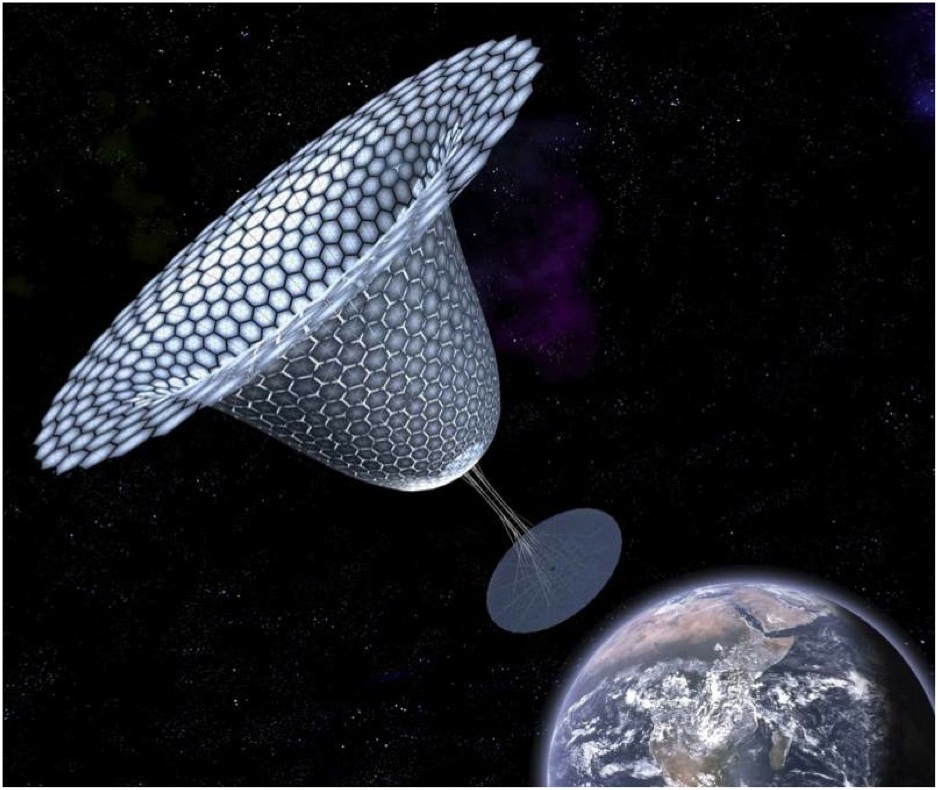
Proposed Satellite Would Beam Solar Power to Earth

PASADENA, Calif. — An energy-hungry Earth is in need of transformational and sustainable energy solutions, experts say.
For decades, researchers have been appraising the use of power-beaming solar-power satellites. But the projected cost, complexity and energy economics of the notion seemingly short-circuited the idea.
Now, a unique new approach has entered the scene, dubbed SPS-ALPHA, short for Solar Power Satellite via Arbitrarily Large PHased Array. Leader of the concept is John Mankins of Artemis Innovation Management Solutions of Santa Maria, Calif.
Mankins provided a detailed overview of the power-beaming concept here during the 2012 NASA Innovative Advanced Concepts meeting March 27-29. [Video: Beaming Power From Space]
The NIAC is under the wing of NASA's Office of the Chief Technologist, which is providing a technology and innovation focus for the space agency.
Huge platforms
Last August, Artemis Innovation Management Solutions was selected for a NASA NIAC award to dive into the details of what Mankins labels "the first practical solar-power satellite concept."
Get the Space.com Newsletter
Breaking space news, the latest updates on rocket launches, skywatching events and more!
The project will be an energetic one-year study of the design. Mankins is drawing upon a 25-year career at NASA and Caltech's Jet Propulsion Laboratory, doing work that ranged from flight projects and space mission operations to systems-level innovation and advanced technology research.
Along with reviewing the conceptual feasibility of the SPS-ALPHA, the team will carry out select proof-of-concept technology experiments.
SPS-ALPHA is a novel "biomimetic" approach to the challenge of space solar power, Mankins told SPACE.com.
Biomimetic refers to human-made processes, substances, devices or systems that imitate nature. The booming field of biomimetics is of interest to researchers in nanotechnology, robotics, artificial intelligence, the medical industry and the military.
Megawatts of power
If successful, Mankins said that this project would make possible the construction of huge platforms from tens of thousands of small elements that can deliver remotely and affordably tens to thousands of megawatts using wireless power transmission to markets on Earth, as well as missions in space, Mankins said.
SPS-ALPHA uses a large array of individually controlled thin-film mirrors, outfitted on the curved surface of the satellite. These movable mirrors intercept and redirect incoming sunlight toward photovoltaic cells affixed to the backside of the solar power satellite's large array.
The Earth-pointing side of this large modular circular array is tiled with a collection of microwave-power transmission panels that generate the coherent, low-intensity beam of radio frequency energy and transmits that energy to Earth.
Mass production
According to Mankins, the SPS-ALPHA has several important advantages over past solar-power satellite approaches.
For example, this new approach eliminates the need for a large integrated power management and distribution system. That significantly reduces the projected cost of the platform, Mankins said during the NIAC gathering.
Moreover, the SPS-ALPHA concept, Mankins said, enables a solar-power satellite that can be assembled entirely from individual system elements that weigh no more than 110 to 440 pounds (50 to 200 kilograms), allowing all pieces to be mass produced at dramatically lower cost than traditional space systems. Therefore, a drastically reduced cost of the SPS system is realizable, he said.
"The current project will provide a detailed analytical understanding of the SPS-ALPHA concept, with supporting experiments," Mankins said. "The needed next steps are to develop a working prototype of one or more of the modules and demonstrate the assembled system in the field. Over the next several years, the goal is to realize a low-Earth orbit flight test of the system," he concluded.
Leonard David has been reporting on the space industry for more than five decades. He is a winner of last year's National Space Club Press Award and a past editor-in-chief of the National Space Society's Ad Astra and Space World magazines. He has written for SPACE.com since 1999.
Join our Space Forums to keep talking space on the latest missions, night sky and more! And if you have a news tip, correction or comment, let us know at: community@space.com.

Leonard David is an award-winning space journalist who has been reporting on space activities for more than 50 years. Currently writing as Space.com's Space Insider Columnist among his other projects, Leonard has authored numerous books on space exploration, Mars missions and more, with his latest being "Moon Rush: The New Space Race" published in 2019 by National Geographic. He also wrote "Mars: Our Future on the Red Planet" released in 2016 by National Geographic. Leonard has served as a correspondent for SpaceNews, Scientific American and Aerospace America for the AIAA. He has received many awards, including the first Ordway Award for Sustained Excellence in Spaceflight History in 2015 at the AAS Wernher von Braun Memorial Symposium. You can find out Leonard's latest project at his website and on Twitter.